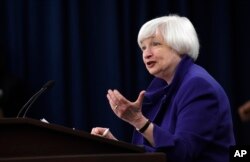Equity markets pointed to a lower open heading into trade on Friday following the U.S. employment data. There were 215,000 jobs added and average hourly earnings increased 0.3 percent, a sign that the labor market is holding up well in the face of slowing global growth.
Stocks recovered at midday, erasing earlier losses as the market kicked off the second quarter of 2016 on pace for six weekly gains.
The market sold off on the better jobs data because it could potentially signal an interest rate hike out of the Federal Reserve, or a tightening of monetary policy. Part of the reason markets made a stunning comeback since the February 11 low is due to the Fed and global central banks adopting very accommodative monetary policy, which in turn supported and inflated asset classes across the board.
Steven Kalayjian of KnowVera Research said, “There is no economic growth. Europe is fighting a deflationary scenario. Japan is in a deflationary scenario, and the U.S. equity markets have not rallied based on a strong economic data or strong corporate earnings. With all of the quantitative easing enacted by the Federal Reserve over the past couple years, U.S. GDP should be in the 3 to 4 percent range. The $4.5 trillion spent on these quantitative easing programs has not spurred economic growth.”
Strong gains
The major averages posted strong gains for March, with the S&P 500 up 6.7 percent. For the quarter, the S&P 500 advanced 0.8 percent, the Dow notched a 1.5 percent gain and the Nasdaq finished 2.7 percent lower as a stunning rally in mid-February launched stocks higher from one of the worst starts to a year. Since the February low, the S&P 500 and Dow Jones industrial average have gained nearly 13 percent, while the Nasdaq gained 14 percent.
Stocks were not the only asset class to shine as gold and Treasurys posted their best quarters in years. In fact, it was gold’s best quarter since 1986. Crude oil climbed back over the $40 level, and natural gas touched over $2. While the rally in stocks is certainly extended and due for a pullback, there is a tremendous opportunity in the commodity complex.
“Commodities have been out of favor for quite some time," said Jonathan Guyer, portfolio manager with Arrow Funds. "2014 and 2015 were down years, and that doesn’t happen often. In fact, this is only the third time since 1970. Improving cost-of-production fundamentals and a weaker U.S. dollar offer an attractive entry point to buy commodities like gold and silver. Equities could go sideways to lower, but I see a basing out in commodities and think they could outperform stocks.”
Another commodity that has quietly participated in the rally is natural gas, and in the longer term, Mark Friedgan of Eligo Energy believes there is a play for both the bulls and the bears.
“U.S. gas production hit an all-time high over the winter despite low prices and major producers cutting back output," he said. "This, coupled with a mild winter, presents the bear case. On the bullish side, low prices may induce power generators to convert their coal-fired power plants to NG more quickly, increasing demand more quickly than expected.”
Trading week ahead
Attention again will be on the Federal Reserve and monetary policy. With very light economic data and earnings calendars, macro headlines will drive the tape.
On Wednesday at 2 p.m. EDT, the Federal Open Market Committee will release the minutes of its meeting from three weeks ago. While there is nothing new expected to come out of the minutes in terms of policy change, analysts and economists parse each word, looking for clues on future moves the Federal Reserve may take. The minutes also include economic analysis compiled by Fed officials, and they indicate whether there are differing opinions among FOMC members.
Even though the Fed discloses its official view at the end of each FOMC meeting with a public statement, Fed officials make the rounds on the speaking circuit, which gives them a forum to express individual opinions to the public. As headlines from their speaking engagements hit the newswires, the content can and does move markets violently.
For example, if a Fed member expresses dovish sentiment and wants to keep monetary policy very accommodative, typically the market will react positively because it suggests the Fed will continue to support asset prices. The inverse applies on hawkish commentary.
In addition to the FOMC minutes, several Fed speakers are scheduled to make appearances this week, including Chairman Janet Yellen, Neel Kashkari, Charles Evans, Loretta Mester, Rob Kaplan and Esther George. Yellen will be speaking with former chairs Ben Bernanke, Alan Greenspan and Paul Volcker.
Oil, natural gas reports
Significant data to watch include the crude oil and natural gas inventory reports, jobless claims, factory orders, the Institute of Supply Management's non-manufacturing index, international trade and the Bureau of Labor Statistics' job openings and labor turnover survey, or JOLTS. That survey lags the all-important employment situation report by a month, but it provides additional information on the labor market such as job openings, hires and separations.
The focus for earnings is generally focused on the consumer. Stocks to watch include Walgreens Boots Alliance, Constellation Brands, Bed Bath & Beyond, Carmax and Rite Aid.
Walgreens shares are up 5.4 percent since reporting first-quarter earnings on January 4, outperforming the S&P 500 by 2.4 percent. Key things to watch in the second-quarter report are the progress on cost-cutting initiatives and details of strategic opportunities following the announcement of the OptumRx partnership.






